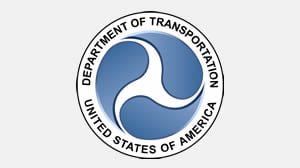RSS feed source: National Science Foundation
Using a new optical system, scientists at the U.S. National Science Foundation National Solar Observatory and the New Jersey Institute of Technology have captured the most detailed images of the complex movements in the sun’s atmosphere, the corona. The technology will allow scientists to better understand the extreme nature of the corona and produce computer models that more accurately predict space weather and potential Earth-impacting solar flares.
The researchers developed the new coronal adaptive optics system at the NSF-funded Goode Solar Telescope in California. Similar to a camera’s “autofocus” feature, the adaptive optics system continuously adjusts to counteract the blurring effect of the Earth’s atmosphere while isolating and zooming in on dynamic coronal features. The results of the study were published in Nature Astronomy.
RSS feed source: National Science Foundation
U.S. National Science Foundation-funded researchers discovered that subtle changes in magma composition may drive tremors during volcanic eruptions, offering a new tool for forecasting volcanic activity and guiding hazard assessments.
Volcano forecasts are critical for protecting lives and property by warning nearby residents to evacuate, take safety precautions and seek emergency services. In addition to offering new clues into the cause of volcanic tremor, a key eruption monitoring parameter, this study shows the benefit of combining petrological data collection, like ashfall, with geophysical data to improve eruption forecasting, hazard assessment and decision-making during volcanic crises.
After lying dormant for 50 years, the Cumbre Vieja volcano in the Canary Islands erupted in September 2021, forcing thousands of residents to evacuate. Over the next 85 days, the eruption destroyed over 3,000 buildings and hundreds of acres of farmland.
Working with local scientists, a research team led by Queens College of the City University of New York (CUNY), in collaboration with the CUNY Graduate Center and the American Museum of Natural History, set up a system near the volcano that collected samples of falling ash almost daily, capturing 94% of the eruption timeline. This study represents an unprecedented level of detail, revealing critical insights into internal magma properties and eruption dynamics throughout the three-month eruption.
Analysis revealed that in the first week of the eruption, magma had higher concentrations
Click this link to continue reading the article on the source website.
RSS feed source: National Science Foundation
An interdisciplinary team of researchers funded by the U.S. National Science Foundation has created a teacher-driven curriculum called Shark AI. This optional online program introduces Florida middle school teachers and students to artificial intelligence through the science of paleontology. With Shark AI, science teachers learn how to incorporate AI and machine learning concepts into their classrooms to help their students build essential skills and prepare for 21st-century STEM careers.
“Most K-12 AI learning occurs with computer science standards and learning goals,” said Bruce MacFadden, University of Florida (UF) distinguished professor and principal investigator (PI) on the project. “Shark AI takes a novel approach by using AI to teach concepts that are connected to biology, paleontology and the nature of science, while at the same time connecting to computer science education goals as well,” he said.
RSS feed source: National Science Foundation
There are outbreaks of chikungunya in Réunion, Mayotte, Mauritius, and Sri Lanka. Mosquitoes spread the virus that causes chikungunya. Country List : Réunion (France), Mayotte (France), Mauritius, Sri Lanka
Click this link to continue reading the article on the source website.


